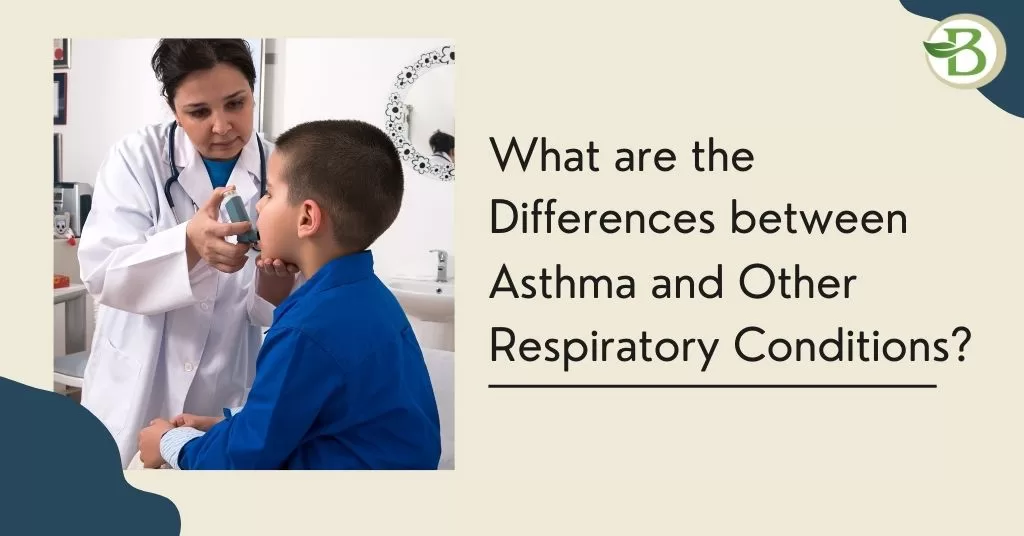Understanding Asthma and other Respiratory ailments
Respiratory diseases are a prevalent concern worldwide, affecting many individuals’ quality of life. While it may be easy to mistake one respiratory issue for another due to their overlapping symptoms, it is vital to comprehend their unique characteristics. The most prevalent respiratory disorders are asthma, chronic obstructive pulmonary disease, cystic fibrosis, lung cancer, bronchitis, interstitial lung disease, and pneumonia. Some acute respiratory diseases, such as an infection, may resolve with time, but others are chronic and must be treated.
This blog explores asthma and other respiratory ailments, providing the information you need to diagnose yourself accurately. By understanding the differences between these ailments, you can take the necessary steps to identify your specific condition and adopt effective management measures.
Asthma
Asthma is a chronic (long-term) respiratory condition impacting the airways. It is characterised by inflammation and constriction of these air passages, resulting in symptoms like wheezing, coughing, chest tightness, and difficulty breathing. Asthma triggers encompass allergens, infections, physical activity, and environmental elements such as pollution or smoke.
Individuals with asthma may have symptoms that come and go, including periods of worsening called asthma attack. These episodes can run from mild to severe and, in some cases, can be life-threatening. Asthma treatment typically involves medications to control inflammation, open the airways, avoid triggers, and maintain good respiratory health. Individuals must work closely with their doctors to effectively manage asthma symptoms and prevent complications.
Chronic obstructive pulmonary disease or COPD
COPD is a condition that primarily affects the lungs and causes breathing difficulties. COPD is a broad term for two basic kinds of obstructive lung disease previously categorised separately: emphysema and chronic bronchitis.
COPD is a condition that develops gradually and worsens over time, making it challenging for individuals to perform easy tasks like walking or climbing stairs. The underlying cause of COPD is long-term exposure to irritants, especially cigarette smoke. Other COPD causes, such as air pollution, genetic predisposition, and occupational exposure to chemicals, can also contribute to the development of COPD. Breathlessness, wheezing, coughing, and chest tightness are some of the COPD symptoms.
Cystic Fibrosis
Cystic fibrosis is a genetic disease primarily affecting the lungs and digestive system. It is characterised by thick and sticky mucus in the airways, leading to breathing difficulties, frequent lung infections, and lung damage over time. While the condition can affect multiple organs, it produces specific challenges on the lungs, such as obstructions caused by thick mucus that trap dangerous germs and lead to infections. Additionally, cystic fibrosis affects the pancreas, causing digestion and nutrient absorption issues. This can result in poor growth and weight gain despite a normal appetite.
Cystic fibrosis symptoms include chronic cough, frequent infections, wheezing, breathlessness, stools with a foul odour, difficulty retaining proper nutrition, nasal polyps and sinus infection.
Bronchitis
Bronchitis is characterised by inflammation and irritation of bronchial tubes or windpipe, leading to frequent coughing, wheezing, and difficulty breathing. In reaction to the inflammation, the bronchial tube lining may produce excessive mucus to cover the affected region, making breathing harder. Viral or bacteria-induced infections and exposure to certain irritants, such as smoke or pollutants, can cause bronchitis. It can be acute, staying for a short period, or chronic, persisting for several weeks or even months. Bronchitis treatment typically involves rest, plenty of fluids, and medications to relieve symptoms. It is important to seek medical attention if your bronchitis symptoms worsen or persist, as bronchitis can sometimes lead to more severe complications.
Pneumonia
Pneumonia is a common lung illness caused by an infection of the air sacs in the lungs. The infections might be bacterial, viral, or fungal. Most individuals recover in one to three weeks, but for some, pneumonia can be exceedingly dangerous and even fatal. The extremely young and old are more susceptible to pneumonia and its consequences. Patients with a history of smoking or a weak immune system may be more vulnerable to pneumonia. If they are fragile or unwell, they are more likely to acquire pneumonia than young, strong, well-nourished adults. Signs of pneumonia include cough, fever, shivering chills, and shortness of breath, ranging from moderate to severe.
Interstitial Lung Disease
Interstitial lung disease refers to a wide range of illnesses, most of which result in progressive scarring of lung tissue. The scarring caused by interstitial lung disease gradually impairs one’s capacity to breathe and receive adequate oxygen into the system. Long-term exposure to hazardous materials like asbestos can induce interstitial lung disease. Some autoimmune illnesses, such as rheumatoid arthritis, can lead to interstitial lung disease. It could also cause significant lung damage. Common interstitial lung disease symptoms include shortness of breath at rest, exacerbated by exertion, and persistent dry cough.
Lung Cancer
Lung cancer is a substantial contributor to cancer death. It may turn into either small-cell lung cancer or non-small-cell lung cancer. The latter is the more prevalent of the two. The leading factor contributing to lung cancer is smoking cigarettes. Other risk factors include tobacco smoke, occupational exposure to toxins, and nutrition. Signs include a continuous cough that worsens with time, constant chest ache, coughing up blood, shortness of breath, wheezing, hoarseness, repeated pneumonia or bronchitis, swelling around the neck and face, loss of appetite and fatigue.
Homeopathic Treatment
Due to its growing success and recovery rate, homeopathy has gained popularity as a treatment option for respiratory-related conditions. Many choose homeopathic remedies over traditional medicine because of their natural approach and minimal side effects. Homeopathy focuses on treating the leading cause of the illness rather than just the symptoms, which can lead to long-lasting relief and better overall health.
Homeopathic treatment for respiratory conditions involves using highly diluted substances to stimulate the body’s natural healing abilities. Homeopathic remedies are tailored to each individual’s specific symptoms and overall health, making it a personalised and holistic approach to treatment. With more people seeking alternative and natural therapies, homeopathy has emerged as a safe and effective option for managing respiratory issues such as asthma, bronchitis, and allergies. If you are looking for a gentle and side-effect free treatment for your respiratory condition, homeopathy may be the right choice.
Bharat Homeopathy
Consider choosing Bharat Homeopathy for your respiratory issues treatment. Bharat Homeopathy specialises in providing natural remedies for respiratory conditions, offering a holistic approach to healing. Our experienced homeopathic practitioners tailor treatment plans to address individual needs, focusing on improving overall respiratory health.
By choosing us, you can benefit from personalised care that targets the primary cause of your respiratory issues. Our treatments aim to strengthen the immune system, reduce inflammation, and promote respiratory function. With a commitment to natural healing and a focus on long-term wellness, Bharat Homeopathy can help you achieve lasting relief from respiratory ailments.


